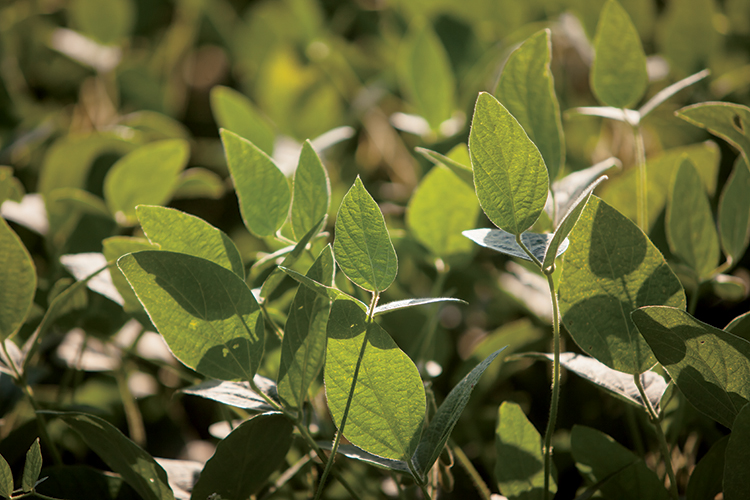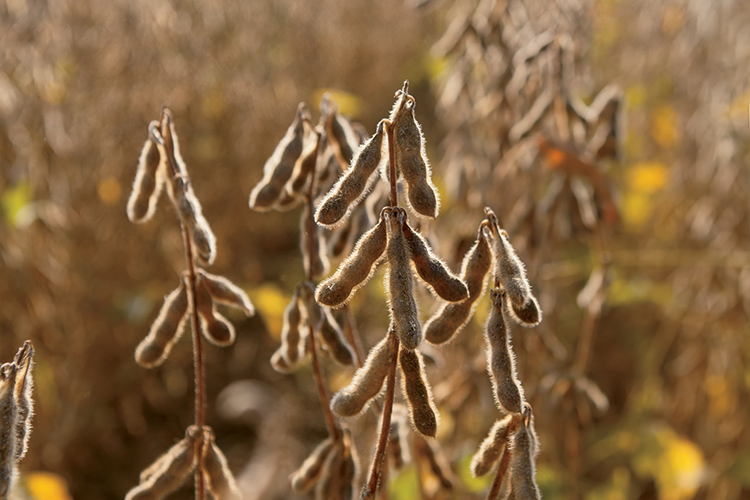Home > Oklahoma > Oklahoma Crops & Livestock > Super Soy
Super Soy

Considering all the products that are made from soybeans today, one question stands out when it comes to the crop’s versatility: Is there anything it can’t be used for?
“We call it the miracle crop of many uses,” says Rick Reimer, the Oklahoma Soybean Board’s executive director since 1994.
Whether it’s feed for livestock or a variety of food products, fuel for biodiesel engines or plastics and solvents, soy is often a key ingredient in today’s society.
Soybeans are mostly used as livestock feed. When the crop is crushed, some 80 percent is turned into meal and the other 20 percent into oil. More than 95 percent of the meal becomes feed primarily for chickens, hogs and cattle, and nearly 40 million bushels of soybeans are used for animal agriculture each year.
“On the oil side,” Reimer says, “there’s a tremendous amount of different things produced, for cooking oils, plastics, soy ink, cosmetics – you name it. There’s a whole host of food products. It’s just unbelievable the number of different things the oil is used for.”

Leading Commodity
If legend is to be believed, there’s a bit of irony that surrounds the origin of soybeans in the United States. The crop dates back centuries in Asia, and came to North America from China in 1765.
“It’s interesting that there’s that many uses when legend has it that the first soybeans came over here from China as ballast on one of their ships,” Reimer explains. “They offloaded the ballast and loaded it with other products coming back from the new world, and soybeans were left here and were, of course, grown for commercial production.”
Today, the crop ranks eighth among Oklahoma agriculture commodities, generating more than $100 million in cash receipts, according to 2014 figures. The state’s soybean farmers are finding success by not only growing a good harvest, but also through increasing demand for the crop. The Oklahoma Soybean Board and the soybean checkoff help to facilitate market growth and the creation of new markets by funding and directing marketing, research and commercialization programs.

Innovator Takes Soybeans From The Farm To The Track
Brent Hajek of Ames is certainly a soybean enthusiast, and something of a Renaissance man. He comes from a long line of farmers and has grown soybeans for a number of years. While growing up on his dad’s farm, and for what he says was “no rhyme or reason,” he became interested in racing.
“It’s just been an obsession,” says Hajek, who owns the Hajek Motorsports Museum in his hometown and is heavily involved in the sport. “I love farming and I love racing, and I figured out a way to tie them together.”
That’s primarily through soybeans. Hajek has built an E-85-powered Ford Mustang using soy products for its body panels, seat foam and paint, and ultimately set six land speed records with the car. He also used a soy-based B-20 biodiesel fuel in a Ford F-250 and broke a speed record with it.
Hajek’s ideas for soy uses go beyond the racetrack, too. He says he has recently made baseball batting helmets from 100 percent soy resin, and he hopes to present them to Major League Baseball, once they’ve been tested and approved.
“Could you imagine how the media would perceive that,” Hajek says, “a farmer developing batting helmets out of soybeans? That would be a great story, a farmer out in the middle of nowhere helping to change the face of baseball by using soybeans.
“It’s just amazing, the different things you could do with it. It would get other people thinking about new uses for soybeans.”




